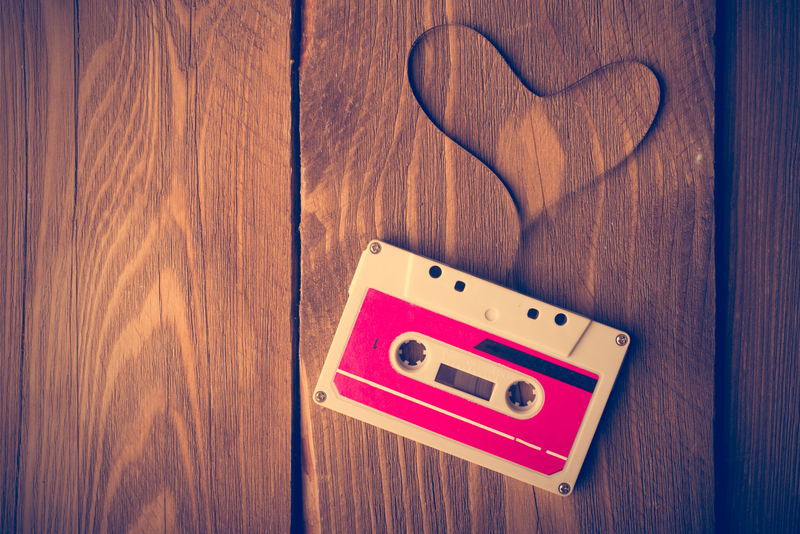Simple Ways to Safely Get Rid of Your Disposable PPE Items
The widespread use of disposable personal protective equipment (PPE)--such as masks, gloves, face shields, and gowns--has become essential in our daily lives, especially following the global pandemic. While PPE provides critical protection from infectious diseases, it also presents an environmental challenge when it comes to disposal. Improperly discarding these items can put sanitation workers at risk, clog waterways, and harm our environment. Thus, it's vital for everyone to understand safe and responsible methods for disposing of disposable PPE items. In this guide, we'll explore simple and effective ways to dispose of disposable PPE safely, protecting both human health and the planet.

Why Proper Disposal of PPE Is Important
The surge in disposable PPE usage has led to an increase in plastic waste and created new hazards. Discarded masks and gloves can:
- Cause litter in public spaces, streets, and parks
- Pose infection risks to sanitation workers and others who handle waste
- Enter rivers and oceans, harming wildlife and marine life
- Block sewage systems and drains, leading to flooding and pollution
For these reasons, it's absolutely crucial to dispose of your PPE properly. This article will show you *several simple ways to get rid of disposable PPE items safely and efficiently*.
Understanding Different Types of Disposable PPE
Before you learn how to dispose of PPE waste safely, it's important to know the types commonly used:
- Masks - including surgical masks and N95 respirators
- Gloves - typically made of latex, nitrile, or vinyl
- Face shields and goggles
- Gowns, aprons, and shoe covers
Most disposable PPEs are made from plastics like polypropylene, making them non-biodegradable and a long-term pollutant if not handled properly.
General Guidelines for Disposing of PPE Safely at Home
Whether you're a frontline worker, student, or simply going out for groceries, you likely use disposable PPE. Here's how anyone can ensure PPE is disposed of safely:
1. Never Recycle Used PPE in Household Bins
- PPE such as masks, gloves, and face shields do not belong in recycling bins.
- Most recycling facilities are not equipped to handle contaminated items, which can jeopardize workers and contaminate recycling streams.
- PPE should only ever go in the general waste bin unless your local government has a special PPE recycling program.
2. Bag Your Used PPE Items Separately
- Double-bagging minimizes risk to sanitation workers handling your rubbish.
- Use small, sturdy bags to place your used PPE in. Seal the bag tightly before placing it in your main trash bin.
- Keep this waste away from other recyclable or compostable materials.
3. Wash Your Hands Thoroughly Afterwards
- Handling used PPE can transmit germs, so always wash your hands with soap and water for at least 20 seconds after disposal.
- If soap and water are unavailable, use an alcohol-based hand sanitizer.
- Never touch your face after handling used PPE items until your hands are cleaned.
4. Use Labeled Containers for PPE Waste
- If possible, set up a separate covered bin just for PPE waste in your home or business.
- Clearly mark the bin as "PPE Waste Only" to prevent mixing with regular trash.
- This helps streamline the process for both you and waste management workers.
5. Do Not Flush PPE Down the Toilet
- Flushing masks or gloves will clog drains, cause plumbing issues, and pollute waterways.
- Always place PPE waste in a trash bin, never a toilet or drain.
6. Follow Local Guidelines for PPE Disposal
- Some cities and countries offer dedicated PPE disposal programs, such as drop-off points for masks and gloves.
- Check with your local sanitation department for any updates or special collection services.
- Participate in official schemes rather than disposing of large volumes in household waste.
Disposing of Disposable PPE at Workplaces
Workplaces such as healthcare facilities, offices, and retail stores generate significant amounts of disposable PPE waste. Here's how businesses can promote safe disposal:
- Install clearly labeled, hands-free PPE disposal bins throughout your facility.
- Train staff and visitors on proper PPE disposal procedures, including bagging and sanitizing hands.
- Regularly remove PPE waste using designated staff wearing appropriate gloves and protection.
- Coordinate with commercial waste management services to ensure PPE is treated as infectious waste if necessary.
- Inform cleaning staff about the hazards and equip them with adequate protection.
By implementing these practices, employers reduce cross-contamination and create safer environments.
Special PPE Disposal Methods for Healthcare and High-Risk Settings
In medical and high-risk environments, such as hospitals, care homes, and quarantine centres, there are stricter guidelines for PPE disposal. Here's an overview:
- Use color-coded, leak-proof biohazard bags specifically for infectious waste, including PPE items.
- Place sharps (like needles) in puncture-resistant containers--never in ordinary bins.
- Seal bags securely and store in designated infection control areas until collected by specialized medical waste services.
- Ensure all staff are trained in the correct disposal procedures and the use of PPE during waste handling.
Healthcare facilities should always follow national and WHO guidelines for infection control and waste management.
Eco-Friendly Tips: Reducing Your Disposable PPE Waste
As responsible citizens, we should not only focus on safe PPE disposal but also on reducing our overall waste. Here are some eco-conscious tips:
- Switch to reusable PPE - where appropriate, use washable cloth masks and reusable face shields.
- Only use disposable PPE when necessary - for everyday errands, a quality reusable mask may suffice.
- Consider biodegradable masks made from natural fibers, if available on the market.
- Encourage community-wide efforts to minimize single-use PPE waste, such as local recycling pilots or PPE take-back programs.
*By reducing single-use items, we can minimize the burden on our planet and keep our communities cleaner and safer*.
What Happens to PPE After Disposal?
Most disposable PPE currently ends up in landfills or incinerators. Some items, like masks, can take hundreds of years to degrade. Incineration can help kill pathogens, but it also releases harmful emissions if not strictly controlled.
Emerging innovations include specialized PPE recycling programs that can convert polypropylene masks and gloves into plastic pellets or construction materials. These programs are still in their early stages and may not yet be available everywhere.
Safeguarding Wildlife and The Environment
Discarded masks, gloves, and other items are increasingly found in oceans, rivers, and green spaces. Wildlife can get entangled in mask straps or ingest fragments, posing a deadly threat.
Tips to Protect Wildlife When Disposing of PPE:
- Cut the ear loops of masks before disposal to prevent animals from becoming tangled.
- Always place PPE waste in covered bins to stop it from blowing away or being accessed by animals.
- Participate in clean-up events and encourage responsible disposal in your neighborhood.
Common Mistakes to Avoid When Getting Rid of Disposable PPE
- *Throwing PPE on the ground or in public spaces instead of a bin.*
- *Trying to recycle PPE with regular plastics--most facilities do not accept this and could become contaminated.*
- *Leaving used masks and gloves on the street, which puts both wildlife and sanitation workers at risk.*
- *Burning PPE at home, which can release toxic fumes.*
Frequently Asked Questions About PPE Waste Disposal
Q: Can disposable masks or gloves be recycled?
A: Currently, most household recycling systems do not accept disposable PPE. Specialized recycling schemes using industrial processes are being piloted in some countries, so check with your local council for updates.
Q: Is it safe to touch used PPE when throwing it away?
A: Used PPE can carry germs. Always handle it by the straps or edges, never the surface that touched your face, and wash your hands immediately afterwards.
Q: How can businesses manage a large volume of used PPE waste safely?
A: Use designated bins in high-traffic areas, secure bags, and coordinate regular collection with certified waste service providers. Inform and train all staff on proper procedures.

Conclusion: Practice Simple, Safe, and Responsible PPE Disposal
Learning simple ways to safely get rid of disposable PPE items is essential for protecting your health, the well-being of waste handlers, and the environment. By following the best practices discussed--such as proper bagging, secure disposal, hand washing, and reduction of single-use items--you can make a significant difference.
Always stay informed about local rules, engage in sustainable habits, and encourage others to do the same. Every small effort counts in building a safer and cleaner world for all.
Quick Checklist: Safe PPE Disposal Tips
- Do not recycle used PPE with household plastics
- Double-bag and securely tie PPE waste
- Use a labeled container just for PPE waste
- Wash hands after handling PPE
- Cut straps of masks to protect wildlife
- Follow local disposal rules and stay updated
- Switch to reusable PPE when possible
Have more questions about disposing of disposable PPE safely? Check local health agency websites or your waste management provider for the latest updates.
Together, let's stay healthy and keep our planet safe!
